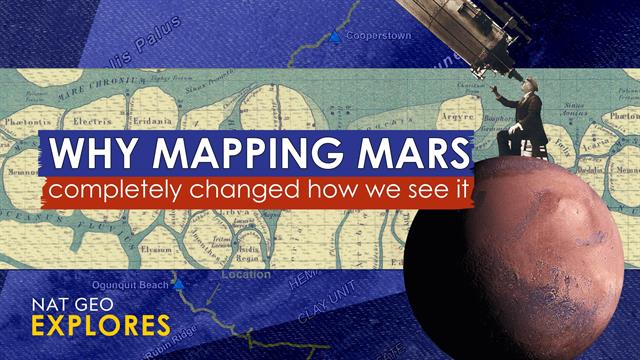Mars Mapmakers' Battles: Shaping Perceptions of the Red Planet
The quest to understand Mars is a complex one, involving not just scientific exploration but also a fascinating struggle over how we perceive and represent the Red Planet. This "battle of the mapmakers," as we might call it, shapes public understanding, fuels scientific debate, and even influences future exploration plans. From early telescopic observations to the latest high-resolution images, the way we map Mars directly impacts our understanding of its history, potential for life, and suitability for future human habitation.
The Evolution of Martian Cartography: From Speculation to Precision
Early maps of Mars were, understandably, highly speculative. Based on limited telescopic observations, they often reflected the biases and expectations of the time. Canals, famously envisioned by Percival Lowell, are a prime example – features later shown to be optical illusions, yet profoundly influential on early Martian narratives. These early maps, while inaccurate, demonstrate the crucial role cartography plays in shaping perceptions: they fueled public fascination with the possibility of Martian civilizations, sparking decades of scientific inquiry and even science fiction.
The Dawn of the Space Age and a New Era of Mapping
The arrival of the Space Age revolutionized Martian cartography. Missions like Mariner 9 and Viking provided the first close-up views, revealing a planet far more complex and geologically diverse than previously imagined. The resulting maps were a far cry from the simplistic representations of the past, showcasing vast canyons like Valles Marineris, towering volcanoes like Olympus Mons, and evidence of past water activity.
-
High-Resolution Imagery: The advent of high-resolution orbiters, like Mars Reconnaissance Orbiter (MRO) and Mars Express, drastically improved map accuracy. These missions provided incredibly detailed images, allowing scientists to map surface features with unprecedented precision. This shift towards higher resolution has profound implications for scientific research, allowing for more accurate geological interpretations and the identification of potential landing sites for future missions.
-
Data Integration and 3D Modeling: Modern Martian cartography is not just about static 2D maps. Scientists are increasingly integrating data from various sources – including topography, mineralogy, and even subsurface radar data – to create comprehensive 3D models of the Martian surface and subsurface. This allows for a more holistic understanding of Martian geology and its evolution.
The Ongoing Debate: Interpreting Martian Features
Even with advanced technology, the "battle of the mapmakers" continues. Interpreting Martian features remains challenging, leading to disagreements among scientists.
The Search for Evidence of Past Life
The existence of past water on Mars is widely accepted, but the debate continues on the extent of this water and its implications for the potential of past life. Mapping efforts focus on identifying locations with high potential for preserving biosignatures, such as ancient lakebeds or hydrothermal vents. The interpretation of these features directly influences the direction of future missions searching for signs of past life.
Planning for Human Exploration
Mapping Mars is crucial for planning future human missions. Identifying safe landing sites, resource locations (like water ice), and potential hazards are all critical considerations. The accuracy and comprehensiveness of Martian maps directly influence mission safety and success. Different mapping techniques and priorities may lead to different interpretations of suitability for human settlement, adding another layer to the ongoing debate.
The Future of Martian Cartography: A Collaborative Effort
The future of Martian mapping will likely involve increased collaboration between scientists, engineers, and even the public. Citizen science initiatives, using publicly available data, can contribute to the understanding and mapping of the Red Planet. Advancements in AI and machine learning will likely automate certain aspects of map creation and analysis, leading to even more accurate and detailed representations of Mars.
The "battle of the mapmakers" isn't about winning or losing; it's about refining our understanding of Mars through rigorous scientific inquiry and continuous technological advancements. This ongoing process, reflected in the constantly evolving maps of the Red Planet, continues to shape our perception and drive our exploration of this captivating world. By understanding this process, we can better appreciate the complexities of scientific discovery and the crucial role of visualization in shaping our understanding of the universe.
